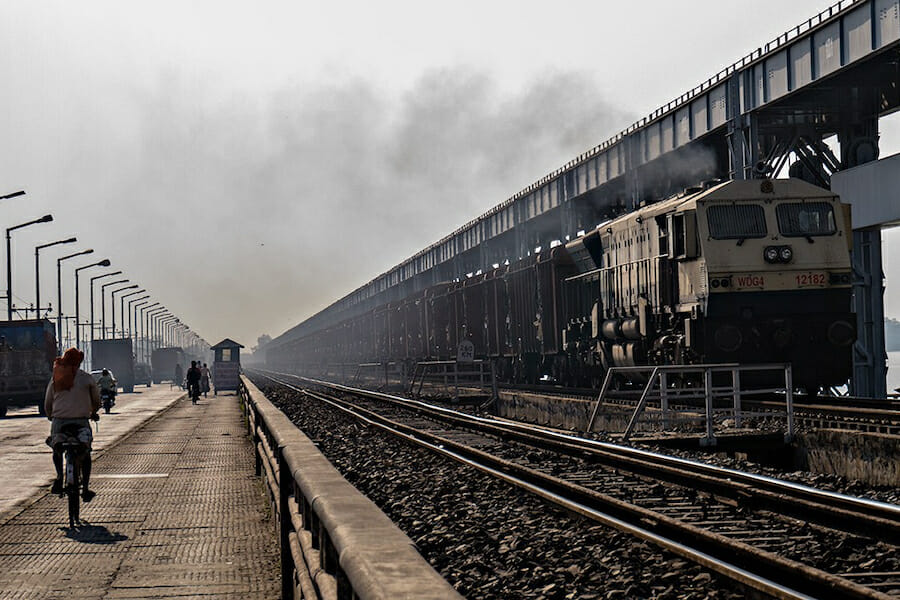
India-Bangladesh River Water Sharing: Politics over Cooperation
Sheikh Hasina’s Awami League’s remaining in power after the scheduled parliamentary elections in January 2014 depends to a large degree on how she bargains with India on the sharing of the River Ganges.
Already, the political situation in Bangladesh is very unstable due to the fallout between the ruling and opposition parties over the war crimes trial, ban on the Jamaat-e-Islami (JeI) and the “caretaker” election system. On top of that she is being accused of allegedly conceding too much to India on the rivers issue. Bangladesh shares 54 rivers with India. The Ganges, the Brahmaputra, and the Meghna river systems drain through Bangladesh into the Bay of Bengal. Internal political dynamics in both India and Bangladesh have led to estrangement despite the fact that the two nations have ample opportunities for cooperation, especially over water issues.
The proposal to construct the Farraka Barrage in the state of West Bengal in India across the Ganges River had led the two countries to come to the negotiating table to discuss respective claims and justifications that date back in the 1950s. The talks broke down in the seventies and the Barrage was operationalised by the Indian side unilaterally. The dam was built chiefly to divert the Ganges waters into the Hooghly River (a distributary of the Ganges) during the dry season in order to remove the silt that had been hindering operations at the Kolkata Port – one of the busiest in India.
The 1996 Ganges Treaty (a thirty-year comprehensive treaty) provides for the distribution of water from Farakka for the two countries between January 1 and May 31. It states that during any critical period, India would get an assured flow of 990 cubic metres/second.
The 1996 treaty came into existence despite hostilities and inconsistencies largely due to the efforts of Prime Minister Sheikh Hasina, who is considered to be pro-India.
The fact that domestic politics plays a big role in river water sharing treaties is best explained by the Indo-Bangladesh water sharing arrangements. Every time the Bangladesh Nationalist Party (BNP) led by Begum Khaleda Zia and supported by anti-India extremist groups came to power virtually no dialogue took place between the two countries that would have enhanced cooperation. The BNP has always opposed the Ganges Treaty and indicted India for excessive drawing of water, depriving Bangladesh of its rightful share.
India has stressed that it has always abided by the terms and conditions of the treaty, at times at the expense of its own water requirements. It has claimed that the water allocated for India is not sufficient for the operation of the Kolkata Port and the power plant in Farakka.
In addition, the West Bengal Chief Minister Mamata Banerjee’s refusal to assent to the Teesta river water sharing agreement (fully endorsed by the Central Government in 2011) gave a big jolt to the two countries’ water cooperation. She argued that the proposed allocation scheme would harm agriculture in the north of West Bengal. This river caters to the demands of a major paddy growing region and to the greater Rangpur region of Bangladesh as well.
This was a big let-down for the Sheikh Hasina government that was cooperating with its Indian counterpart in counter-insurgency operations against the United Liberation Front of Assam (ULFA) – a separatist group from the Indian state of Assam bordering Bangladesh that had found a safe haven in Bangladesh and had cracked down on anti-India Islamist groups in Bangladesh.
Another dispute regarding the Tipaimukh hydroelectric project in India on the Barak is yet to be settled. The dam is expected to control floods in Assam’s Barak valley and generate electricity for states in the Northeast of India. Farmers in Bangladesh have cried foul fearing it would reduce the water flow to their land, thus damaging rice crops that depend on seasonal flooding of these transboundary rivers during every monsoon. However, there has been a decision between the two countries to conduct a joint Environmental Impact Assessment of the project.
There have been discussions on augmenting the flow of the Ganges River by diverting waters of the Brahmaputra River, considering the two meet in central Bangladesh as the in-basin utilisation of the latter currently accounts for only 4 percent of the available surface flow. India has proposed to construct a gravity link canal to divert 43 billion cubic metres (BCM) of water from the Brahmaputra River to the Ganges River.
This has also raised concerns in Bangladesh as this could mean that the entire flow of river water to Bangladesh would be controlled by India and it could also lead to a reduction in the amount of water downstream, causing saltwater intrusion and other environmental damages. However, it could help control frequent floods in Bangladesh. If India could share the augmented share of water with Bangladesh equitably through the Joint Rivers Commission, the latter’s fears could be laid to rest.
In terms of cooperation, India is known to provide flood data on all the major rivers that flow into Bangladesh from India. In 2008, the two countries agreed to undertake joint dredging to facilitate river navigation along the Kolkata-Haldia and Karimganj river routes. An initiative to preserve the Sundarban ecosystem (of which 60 percent lies in Bangladesh and 40 percent in India) involving joint patrolling of waterways and replenishing freshwater supply to the area was also agreed upon in 2011.
Bangladesh is very keen on establishing a tri-nation initiative on common basin management of the Ganges that would include India, Bangladesh, and Nepal. If this materialises, it would be a landmark sub-regional water-sharing arrangement. This could be integrated with the other two basins (Brahmaputra and Meghna) that would include Bhutan as well. And later China could also be roped into joining the Mekong River Commission of Southeast Asia. Having separate river commissions leaves room for confusion, disharmony, and disagreement. A Joint Rivers Commission should ideally include a provision for arbitration in order to resolve all types of disputes.
India however, has been focussing more on the actual deliverables in the form of bilateral arrangements. Such a short-range response by India has only subdued the enthusiasm for initiatives that could enhance hydro-cooperation with its neighbouring countries especially Bangladesh. India must also realize that Bangladesh is crucial for increasing connectivity with the Northeast – a part of India that has been politically and geographically alienated from the rest of the country for a long time.
The two countries must be engaged in the joint assessment of impacts of climate and environmental change on water security in the region and work towards design and implementation of appropriate policies in this direction. It would be a daunting task to reach an agreement on the sharing of each of the 54 rivers. It would be better to adopt a more feasible approach that would be constituted by an integrated collaborative and sustainable management of all shared rivers.
2014 is a crucial year for India and Bangladesh with both countries set to witness elections. Sheikh Hasina is expected to be returned to power in an unfair election with a predetermined result as the BNP and other opposition parties have decided to boycott the polls. An agreement on Teesta could dissipate partly the sentiments against her government in Bangladesh. Whether or not India sees a change in guard, it cannot afford to lose its long-time friend, Sheikh Hasina.
